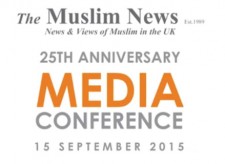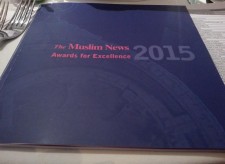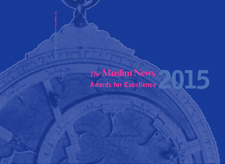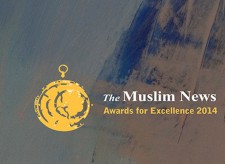By Hanna Yusuf
Egypt: Faith after the Pharaohs
In a time when most of the world’s conflicts are caused by religious misunderstanding, the British Museum’s new exhibition, Egypt: Faith after the Pharaohs, gives an insight to what was once a nation that thrived under peaceful coexistence. The exhibition guides the modern observer through a captivating journey that leaves us questioning how we view religion today.
The three sacred texts at the start are appropriately placed closely next to each other to set the mood for what is to come. Together, the Torah, Bible and Qur’an take centre-stage.
The focus on the texts is a reflection of how they are perceived by their religious followers. In Islam, Judaism and Christianity, the texts are core parts of faith. Their high rank isn’t the only thing the three scriptures have in common. They are very similar in shape and size, yet they represent faiths that are deemed to have clear boundaries. The fact that the scripts are in different languages is overridden by the one message they all carry: there is one God.
The transition from a nation thriving under polytheism to the worship of one God is clearly marked throughout the exhibition. The art, jewellery and sculptures sit under what John Milton called a “dim religious light”. The extravagant gallery of pagan gods takes us through to a gallery with more muted items, representative of a nation that became satiated by one God and as a result, became detached from the material world.
The collection reveals the very few differences between the beliefs. One object that captures this liquidity of faith is a 7th century gravestone belonging to ‘Abraham the Perfected Monk’. The overflowing of faiths begins with the Monk’s name. Abraham was originally a Hebrew name, which then became popular with the Christian community in Egypt. The stone displays two hieroglyphs that have the shape of handled crosses, which Christians adopted from ancient Egypt. Like the Hebrew ‘Chai’ sign, the hieroglyph adopted by the Christians also symbolises life.
Even in their day-to-day dealings, Jews, Christians and Muslims followed similar patterns to strengthen their communities. A document from 291 AD records how the Jewish community came together to purchase the freedom of Paramone, a Jewish slave, and her children. One of the intermediaries acting on behalf of the community was a Palestinian. Similarly, when the Muslims conquered Egypt, they also worked on creating a cohesive community. The framed petition to Sitt al-Mulk, the Caliph’s half-sister, encapsulates this community spirit.
Just like the 113 of the 114 surahs (chapters) of the Qur’an, the gallery marking the start of Egypt under Muslim rule starts in the name of God. What remains of a ‘Basmallah’, made of immaculate marble, is displayed on the wall. After years of working to establish a Muslim Caliphate in Egypt, one can imagine the many things that were done under the name of God. However, Egypt under the caliphate of ‘Amr ibn al-‘As, is a world away from what we know of a state under a caliphate today. Like the Romans, the Muslim rulers showed tolerance towards other faiths, even permitting Christians and Jews to occupy high positions in the government.
Cooperation between Muslims and Jews is almost a theme of its own throughout the exhibition. The fragile remains of a letter, in which a Jewish trader recommends his highly trustworthy Muslim partners, sits next to an excerpt of the Qur’an written in Hebrew. These letters are preceded by a book, which at first glance looks like the Qur’an, but is in fact the Torah in Arabic script. A handwritten letter by Maimonides, Jewish philosopher, himself completes the collection of Judeo-Arabic fragments.
The closing items are three items that, unlike the three sacred texts at the beginning, are everyday objects that probably remained within families. The three children’s tunics look like they were made from similar material. I would imagine the owners of the tunics to have looked like they were cut from the same cloth too, so to speak. The only thing that would be different is how they chose to obey the one God they all believed in. It is not known whether the tunics belonged to Jews, Muslims or Christians. The only thing that is certain is that they were all Egyptians.
[Photo: Gravestone of ‘Abraham, the perfected monk’, Egypt, 7th century AD © The Trustees of the
British Museum]
The collection not only shows how faith after the Pharaohs shaped religion today but also teaches us a lot about the desperate desire humans have for a sense of belonging. It seems that the pursuit of belongingness is what drove people to separate faiths that are in fact very similar. As you walk through the galleries, you experience the same journey to the same God but from a different perspective. This similarity is, to an extent, relevant even today. However, the desire for belonging has intensified, so much so that fanatics find it justifiable to use coercion to assert their beliefs. The exhibition paints a fascinating picture of religion that could be of insight for both cynics and supporters of religion today.
[Photo: Marble relief from a funerary monument with Arabic inscription, later re-carved on the reverse
as a grave stela in AD 966–67. Egypt, probably Cairo, originally made in 10th century AD © The
Trustees of the British Museum]
Egypt: Faith After the Pharaohs at the British Museum, London. 29 October – 7 February.


















